
Travel Guide
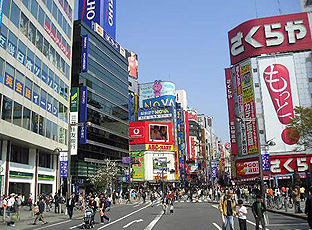
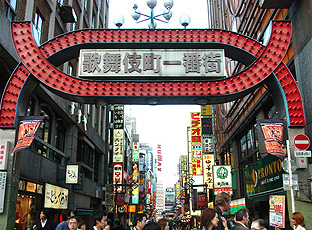
Introduction
Shinjuku is one of the 23 central wards of Tokyo and is the center of Tokyo culture, and it never stops evolving. Most of the things to do in Shinjuku are concentrated in the vicinity of Shinjuku Station and its adjacent skyscraper district. In fact, many people out on shopping tours may travel to the train station, do all their shopping, and technically not leave the station at all. Even the Shinjuku nightlife found in Kabukicho is near the station to the northeast.
With 3.5 million commuters come through per day, Shinjuku station itself is registered in the Guinness World Records as the busiest train station in the world. Shinjuku Station is served by about a dozen railway and subway lines, including the JR Yamanote Line. Shinjuku is also one of Tokyo's major stops for long-distance highway buses and city buses.
Shinjuku can be divided into three: East, West, South and Southeast of Shinjuku Station.
East Shinjuku
The area east of Shinjuku Station and surrounding Shinjuku-sanchome Station, historically known as Naito-Shinjuku, is one of the best known and bustling shopping areas of Tokyo. There are several camera and electronics stores located in the area too.
West Shinjuku
The area west of Shinjuku Station, historically known as Yodobashi, is home to Tokyo's largest concentration of skyscrapers. Several of the tallest buildings in Tokyo are located in this area, including the Tokyo Metropolitan Government Building whose observation decks are open to the public for free. There are several premier hotels, major department stores and electronics shopping in this area too.
Shinjuku Chuo (Central) Park is next to the Tokyo Metropolitan Government Building. It’s not particularly picturesque, but you may find it socially interesting – much of it is a shanty town inhabited by down and outs. On some Sundays a flea market is held in the entrance.
South Shinjuku
There is a big terrace in front of the South Exit, a pleasant place for a walk. And there is Shinjuku Gyoen National Garden on the east-south side, a true oasis for people living and working in downtown Tokyo.
Southeast Shinjuku
A breathtaking building at dusk, the Times Square Shopping Centre stands on land that was once occupied by tumble down wooden shacks and drinking places. Finished in 1996, inside you’ll find a branch of Tokyu Hands the famous arts and crafts shop, and Kinokunia which sells English books.
There are more attractive attractions in these areas.
Kabukicho
Kabukicho is located at east exit of Shinjuku Station. Kabukicho is Japan's largest and wildest entertaiment area. Named after a kabuki (a popular Japanese traditional performing art) theater, the district features several restaurants, bars, parlors, love hotels, and a variety of other red light establishments. The area also has many movie theaters and game places.
Golden Gai
Golden Gai is block of bars just east of Kabukicho that preserves the Tokyo of the 1960s. Famed for its dense rows of tiny bars and its unabashed grottiness, this ground-level warren of tiny bars attracts a multitude of different types, and promises interesting encounters. Of the over 200 bars here, there are many that welcome foreigners. Look for signboards with English. Bars usually open from around 19:30 until the next morning, often with a cover charge between 500 and 1000 yen.
Musicians, artists, journalists, actors and directors gather here, and the ramshackle walls of the bars are literally plastered with film posters.
Metro Promenade
Metro Promenade is the underground mall, owned by Tokyo Metro, which extends from the station beneath Shinjuku Avenue, all the way to the adjacent Shinjuku-sanchome Station with 60 exits along the way. Still another underground mall, the Shinjuku Subnade, connects Metro Promenade to Seibu-Shinjuku Station.
Omoide Yokocho
“Omoide Yokocho” means “Memory Lane,” but the place is commonly known as “Piss Alley,” both to outsiders and the Japanese. This little area is located to the northwest of Shinjuku station, and is famous for excellent yakitori. You can also find soba, ramen, sushi, and kushiyaki, among other dishes. The restaurants here are as tiny the bars of Golden Gai, and there is a similar, run-down feel, which is all part of the charm.
In 1999 when a fire broke out in a ramen shop, the area was almost completely destroyed. Now however it’s been re-built, and as the character has been retained, at night it still remains one of the city’s most atmospheric places to wander.
Shinjuku 2-Chome
Another interesting place in Shinjuku would be the Shinjuku 2-Chome, a famous gay district. There is saying "no person is wasted in Shinjuku 2-chome" meaning that everyone will find a lover there.
History of Shinjuku
In 1634, during the Edo period, as the outer moat of the Edo Castle was built, a number of temples and shrines moved to the Yotsuya area on the western edge of Shinjuku. In 1698, Naito-Shinjuku had developed as a new (shin) station (shuku or juku) on the Koshu Kaido, one of the major highways of that era. Naito was the family name of a daimyo whose mansion stood in the area; his land is now a public park, the Shinjuku Gyoen.
In 1920, the town of Naito-Shinjuku, which comprised large parts of present-day Shinjuku, parts of Nishi-Shinjuku and Kabukicho was integrated into Tokyo City. Shinjuku began to develop into its current form after the Great Kanto earthquake in 1923, since the seismically stable area largely escaped the devastation. Consequently, West Shinjuku is one of the few areas in Tokyo with many skyscrapers.
The Tokyo air raids from May to August 1945 destroyed almost 90% of the buildings in the area in and around Shinjuku Station. The pre-war form of Shinjuku, and the rest of Tokyo, for that matter, was retained after the war because the roads and rails, damaged as they were, remained, and these formed the heart of the Shinjuku in the post-war construction. Only in Kabuki-cho was a grand reconstruction plan put into action.
The present ward was established on March 15, 1947 with the merger of the former wards of Yotsuya, Ushigome, and Yodobashi. It served as part of the athletics 50 km walk and marathon course during the 1964 Summer Olympics.
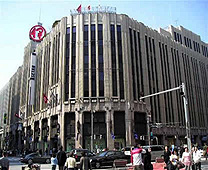
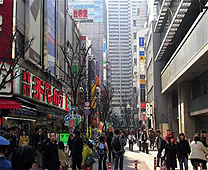
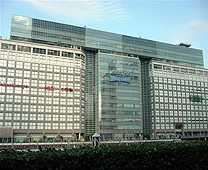
Travel Advice
Sighseeing
If you do not have plenty of time being at Shinjuku, you can enjoy the largest shopping area in Japan by visiting East Shinjuku.
Shops and restaurants in Shinjuku typically open around 10:00 but close time varies. For example, department store close at 20:00 or 20:30, drug stores close at 23:00 but some open for 24 hours.
The main streets at east exit of Shinjuku Station will be temporarily closed to vehicle traffic on Sundays and holidays between 12:00 and 17:00 through October to March and between 12:00 and 18:00 through April to September. During the closing time, street performance includes bands, acrobatics, dance, magic show and fire eating demonstrations is held by street performers.
Shinjuku Station is connected by underground passageways and shopping malls to Nishi-Shinjuku Station of Tokyo Metro Marunouchi Line, Seibu-Shinjuku Station of Seibu Shinjuku Line, Shinjuku-nishiguchi Station of Toei Oedo Line, Shinjuku-sanchome of Tokyo Metro Marunouchi Line, and Tochomae Station of Toei Oedo Line.
To have fun safely
A busy part of the city by night, with all kinds of restaurants, bars and hostess bars, pachinko and other entertainment facilities. Watch your belongings and avoid places with unlisted prices. Also, be aware that shady businesses in Kabukicho tend to have “underworld connections”.
It is known that many of the activities of Kabukicho are managed by the Japanese mafia, the Yakuza, and for this reason, the district hasn't a good reputation. However, there is no danger if you take some simple precautions, completely ignoring certain blacks (or anyone else) trying to invite you into their nightclubs offering you beautiful girls, because it's just a way to extort money.
Visit
| Address | Shinjuku, Shinjuku-ku, Tokyo | |
| Phone | ||
| Admission | Free | |
| Hours | Free time | |
| Closed | Open 7 Days a Week | |
| Duration | 1 hour | |
| Getting There | By Train 1 minute walk from Shinjuku Station on Yamanote Line, Saikyo Line, Chuo Line, Somu Line, Odakyu Line, Keio Line, subway Marunouchi Line or subway Oedo Line. |
|
| Parking | Paid parking available | |

